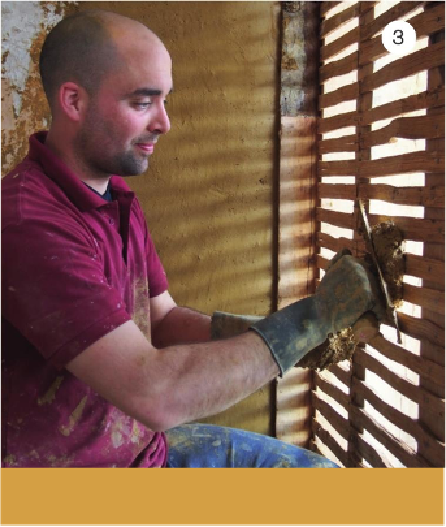Civil Engineering Reference
In-Depth Information
3. Here the finished clay plaster is applied in the restora-
tion of a listed building.
Clay may potentially have a much lower carbon footprint than finishes based on lime, since
building limes are produced by burning limestone in a kiln (a high-energy process). Clay is
a common, easily accessible, naturally occurring subsoil found all over the UK and indeed
the world, and has been used for a finish for the walls of earth, timber and stone build-
ings for centuries. Clay plasters made on-site from raw materials dug from clay deposits
nearby (as illustrated in the photos above) boast virtually unbeatable sustainability criteria.
If a suitable clay is found on your plot, your finishes could even be made from the subsoil
excavated when foundations are dug. Weismann and Bryce give more information on how
to make and use clay plasters in
Using Natural Finishes.
Clay is a material that takes up a lot of moisture in conditions of high relative humidity,
releasing it again when the humidity level drops. This makes clay plasters eminently suit-
able for a finish over hempcrete or timber on internal walls, since the clay will also help to
suck any excess moisture out of the hempcrete wall and release it into the atmosphere.

Search WWH ::

Custom Search